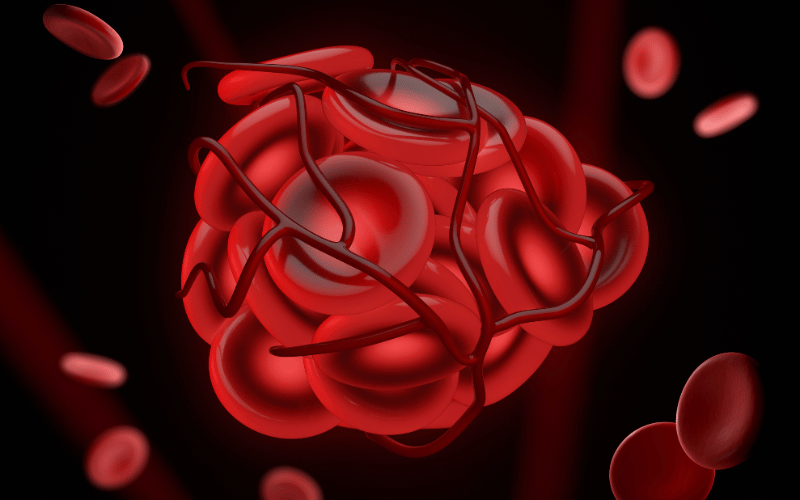Symptom 8: Blood Clots

Blood clots, medically termed as thrombosis, are a concerning health anomaly. These are solid clumps of blood formed within the vessels that can obstruct the flow of blood. In the realm of PanNETs, the presence of tumors can catalyze the formation of such clots, not merely due to direct obstruction but also due to biochemical factors that the tumor introduces into the bloodstream.
One of the most discernible manifestations of blood clots is in the legs, known as deep vein thrombosis (DVT). Symptoms in such cases range from swelling, pain, and a reddish or bluish discoloration. The skin around the area may feel unusually warm. However, legs aren’t the sole location. Pulmonary embolisms, clots that reach the lungs, can trigger symptoms like sharp chest pain, sudden breathlessness, and coughing episodes which might even produce blood.
Delving deeper into the mechanics, PanNETs can disturb the blood’s equilibrium. The tumors, either through their physical presence or through hormone excretion, can elevate clotting factors in the blood. This overproduction tilts the balance, making the blood more prone to forming clots. Additionally, any form of cancer, by its very nature, boosts the body’s inflammatory response. This heightened state of inflammation can further predispose an individual to clot formation.
Uncovering the presence of blood clots often mandates a battery of tests. Ultrasounds, particularly Doppler ultrasounds, are the first line of defense for suspected DVT. For pulmonary concerns, CT scans offer a detailed view. If there’s a suspicion that PanNETs might be the root cause, the diagnostic process may extend to hormone level checks and, in some cases, tissue biopsies. Early detection remains paramount, given the life-threatening complications clots can instigate. (8)